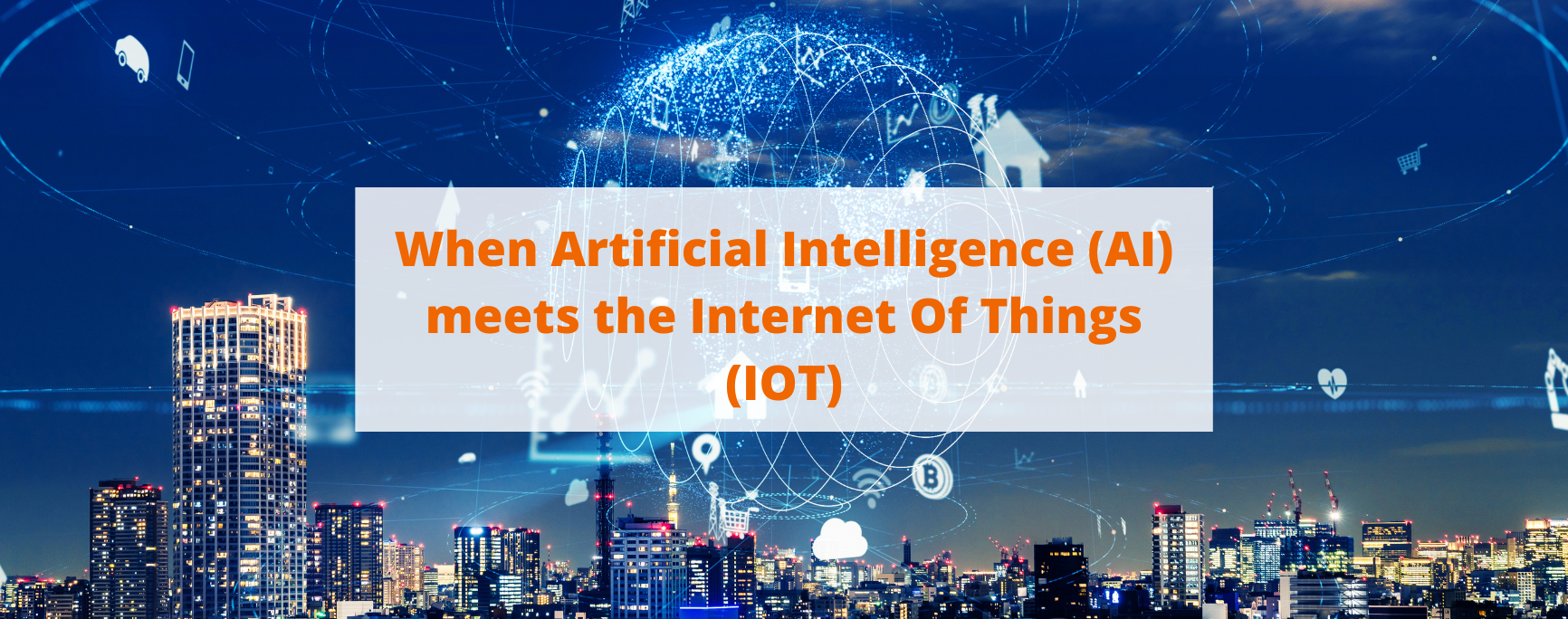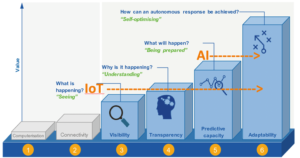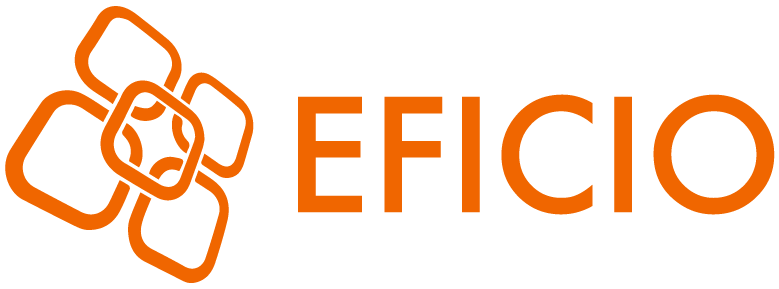
AIoT: When AI meets with IoT
When an organization decides to embark on its digital transformation, the combination of the Internet of Things and artificial intelligence can create significant innovations within the organization.
Artificial Intelligence of Things, or AIoT, combines artificial intelligence (AI) technologies and the infrastructure of the Internet of Things (IoT). Connected object operations are more efficient, human-machine interactions are improved, and data management and analytics are more advanced.
The manufacturing sector is poised for a new massive increase in IoT (Internet of Things) applications integrating AI (Artificial Intelligence). The annual IoT market is estimated to reach $2.4 trillion by 2027 and has a growth rate of approximately 35% per year, according to Business Insider.
The most common use cases for Artificial Intelligence of Things (AIoT) are:
- Automation and robotics,
- Optimization of manufacturing processes,
- Early warning alerts,
- Quality control,
- Equipment failure prediction.
The key is to collect the appropriate data, and by doing so, industrial companies can develop innovative AI applications that differentiate them from their competitors.
This infographic by TSMC highlights the transformation technologies and trends that make these changes possible.
AI + IoT = Power of innovation
By 2025, Stastista predicts that there will be 42 billion connected devices worldwide. As the number of devices increases, it is only natural that the volume of data will increase as well. This is where AI comes in: it lends its learning capabilities to the data and connectivity of IoT.
AIoT relies on three key emerging technologies:
- The Internet of Things (IoT): with embedded technology on equipment or devices (sensors, actuators, RFID chips, etc.), IoT can identify and communicate with all links in value chains (machines, products in manufacturing, finished and in-use products, employees, suppliers, customers, infrastructures, etc.), which can be referred to as “objects”.
- Artificial Intelligence (AI): programmable functions and systems that enable devices to learn, reason, and process information like humans.
- Big Data: these are data from enormous volumes of raw data processed from numerous sources connected to the internet.
Interconnected devices are transforming the way we interact with our devices at home and work, thus creating the AIoT (“Artificial Intelligence of Things”).
The main segments of AIoT
There are four major segments in which AIoT will increasingly have a significant impact:
- Wearable devices
Wearable devices such as smartwatches continuously monitor and track users’ preferences, habits, location, and behaviors. This has not only led to impactful applications in the healthcare sector but also works well for sports, health, worker safety, etc. According to research firm Gartner, the global wearable device market is expected to generate over $87 billion in revenue by 2023.
- Smart buildings
Homes that respond to each of your requests are no longer science fiction. Smart homes can leverage appliances, lighting, electronic devices, and more, learning the habits of homeowners and developing automated “assistance.” The same is true of buildings (office towers, industrial or government buildings).
This transparent access also brings additional benefits of improved energy efficiency. As a result, the smart building market could experience a compound annual growth rate of 25% between 2020 and 2025, reaching $246 billi
- Smart cities
As more and more people flock from rural areas to urban areas, cities are evolving into safer and more convenient living places. Smart city innovations are keeping pace, with investments aimed at improving public safety, transportation, and energy efficiency. The practical applications of AI in traffic control are already becoming clear. In New Delhi, where some of the world’s most congested roads are located, an intelligent transport management system (ITMS) is used to make “dynamic decisions” in real-time on traffic flows.
- Smart Industriy
Finally, industries, from mining to manufacturing and assembly, to food processing, rely on AIoT to become more efficient and reduce human errors.
From real-time data analysis to supply chain sensors, smart devices help prevent costly errors in industry. In fact, Gartner also estimates that more than 80% of enterprise IoT projects will integrate AI by 2022.
Definition of fuzzy AI
Artificial intelligence is developing, but exact figures are difficult to obtain because the definition of AI is often fuzzy. There is confusion between related techniques or technologies such as machine learning, deep learning, industrial vision, and data analysis.
AI is not an isolated discipline. It is rather a set of methods and techniques aimed at solving complex problems that would have been reserved for human intelligence. AI is an approach that aims to simulate, using computer tools, human cognitive abilities.
For example, the use of a robotic arm and camera to inspect parts may be advertised as machine learning or an AI device. Although the device may indeed detect anomalies, it may only compare images taken to other images that have been manually added to an image library. Some will say that this is not a machine learning device because it makes a pre-programmed decision, not a decision “learned” from the machine’s experience.
Barriers of adoption
IoT is developing well in the industrial world. Among our industrial clients, we can see more and more connected equipment for visibility purposes (level 3 in the diagram below). As for the adoption of AIoT, that’s another story.

Figure 1- Industry 4.0 Maturity level (ref. APMS)
We can see some embedded AI projects (such as “smart cameras” or other Edge AI) among our SME or even mid-sized clients, but to deploy more complec AIoT solutions, a maturity level of 5 or 6 will need to be achieved. Indeed, there are important prerequisites before deploying AI. Without sufficient quantity and quality of data, the risks of project failure are high. In such a project, the majority of the work consists of collecting, interpreting, and organizing often massive amounts of data. It will be necessary to master:
- Data analysis and processing techniques;
- Healthy data governance;
- The science of Artificial Intelligence.
Another fundamental question: Your problems and objectives must be well defined. In fact, the first question of your project is not technical. It is not about asking what AI technologies to use or what algorithm to use. The starting point is: what business problem do you want to solve? We must make the problem as explicit as possible.
EFICIO’s CIOs can help you frame your issue to identify the necessary data tracks for running relevant algorithms.
Conclusion
The fusion of AI + IoT will offer enormous potential, as it continues to push the limits of data processing and intelligent learning for years to come. AIoT innovation is only accelerating and promises to lead us towards a more connected future, generating more innovation and value for our organizations.
Subscribe to the Eficio newsletter and be the first to receive our updates!

